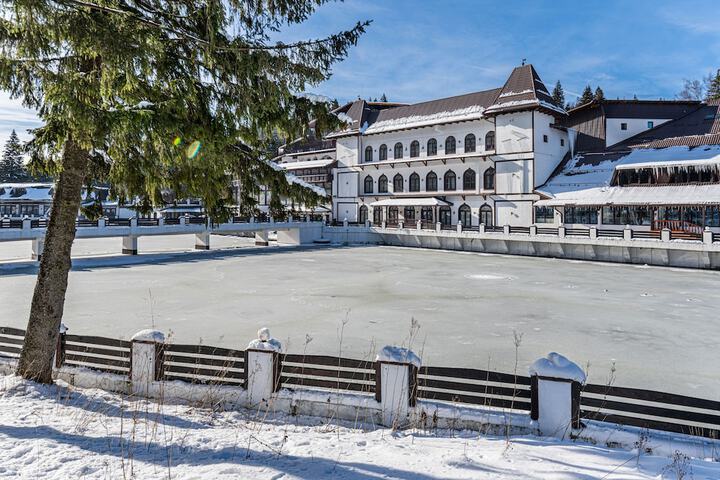
“Blood is spilled, hearts are scatter
Liviu C.
His children prey into the night shatter
Beast of prey who feed on fear
Will hunt and pillage with their spear,
To feast in honour of their King
Nothingness but death will bring.”
Vlad the Impaler
The character Vlad Dracula is loosely based on Vlas Tepes or Vlad III. For ease of this blog, we’ll be addressing him as Vlad III or Vlad the Impaler. Vlad III was born in 1431 while his father Vlad II. Later on, Vlad II was the king of Wallachia. So, Vlad III was the prince of Wallachia. He was born in Transylvania, which is now known as Romania. And there is one question that comes roaming around in our minds? Where did Dracula live? While the fictional Dracula lived in his fortress over the mountain, there are no written elements that show where Vlad III used to live. One thing is certain though, he was never associated with Transylvania. The reason why people think that Vlad III is the Dracula Bram stoker wanted to portray is his nature of vengefulness and brutality. He wanted blood just as Vlad Dracula, but not for drinking. The atrocities performed by Vlad III is the reason behind his nickname, Vlad the Impaler. Both of the characters are driven by forces that cannot be tamed. Either you let go, or you destroy everything.
Horror of Wallachia
The actions of Vlad III have made him hard to forget even after all these centuries. People are still terrorized by the actions that went into the wars by him. Let’s take a look at some of the examples of his brutal nature. During his reign, Wallachia had to be on high alert all the time because no schedule was being maintained by the Ottoman and the Hungarian Army. Once, the Ottoman armies were retreating. Vlad the Impaler took the bodies of his own citizens and the enemies and impaled them on spikes across the country. Hence, the name Vlad the Impaler was born.
Another story would be the death of many boyars of Wallachia who were all stabbed at the same time. Boyars had a questionable relationship with the Vlads for a very long time. So, when Vlad the Impaler rose to power, he did what he does best. He killed them all and put their bodies on spikes immediately. Literally, with the bodies twitching.
A very intriguing story that goes around a lot would be the Saxon merchants. They had an audience while Vlad III was in power and was doing their religious ritual where a turban is a must. Dracula made sure that the turbans were never removed. He nailed the turbans with the
heads of the merchants.
All of these facts could not stop Vlad III from becoming one of the most popular rulers of Wallachia from that era.
Vlad the Impaler at Castle Bran
Though many myths have been connected to Vlad III in connection with the Dracula myth, most historians agree that Vlad III Dracula never set foot in Castle Bran. The castle was connected to Vlad III for a number of reasons. Castle Bran was neither a friendly place for Vlad III to visit, nor was it under his rule. His connection to the castle had long been one linked to his imprisonment after he was captured by the Hungarians in 1462. It was believed that he was imprisoned in Castle Bran, but historians now conclude that Vlad III was actually imprisoned in a fortress in Budapest. It is said by historians that Castle Bran was chosen to be the colloquial location of Vlad III’s imprisonment as it is a more haunting and dramatic looking structure than other castles of the region. Historians and scholars alike have concluded that Vlad III likely never set foot in the castle. However, as there is a lack of written historical accounts from the region at that time, the idea cannot be completely discredited.
Source: http://www.bran-castle.com/dracula.html, https://en.wikipedia.org/wiki/Bran_Castle.
Fly to Romania
The fastest way to travel to Bran si to fly to Sibiu which is only one hour and half drive from the Sibiu Airport to the Bran’s Castle, or you can fly to Bucharest, depending on your flight, which is 2 hours and half drive distance from the castle.
If you want to see more of Transylvania’s scenery you can fly to Cluj Napoca and from there a 4 hours and a half drive to the castle will give you plenty of opportunities to discover more of Romania.

Where to stay
What to experience
Europe travel guides
From the backpacker ‘bible’ covering the entire continent to unmissable road trips and richly detailed Country guides, Lonely Planet collection of Europe guidebooks is exhaustive – and packed with expert insight.
Travel to Romania: A First-timers Guide
Romania is the home of medieval treasures, great hiking trails, and plenty of other natural and historic wonders. Pasqualina Perone shares her tips on travel to Romania.
Romanian Currency – A Brief Cost Guide
The only currency used is the Romanian leu. Despite being a European country, euros are not accepted anywhere in Romania.
- Set aside approximately 10 – 30 RON per day for attractions.
- On average 50 – 60 RON for a dorm bed, or 120 RON for a room in a modest hotel.
- Between 40 – 80 RON a day for food, depending on your appetite.
If you’re into luxury accommodation and expensive meals, these costs will be higher!
Tipping in Romania
Tipping is expected as Romanian waiters are paid a very low wage, so be sure to also factor this in when drawing up your budget.

Do I need a VISA?
Regardless of your country of origin you need proper and valid passports.
More information can be found here:
http://romaniatourism.com/entry-requirements.html.
For US Citizens:
https://travel.state.gov/content/travel/en/international-travel/International-Travel-Country-Information-Pages/Romania.html.



* Pricing and availability are subject to change. All itineraries/tours/guides are based on airlines, travel agencies, hotel, tour policies, schedules and operational conditions at the time of booking.








